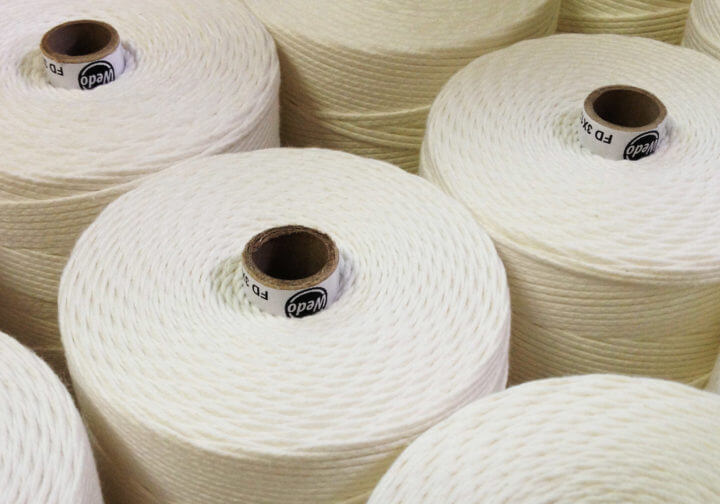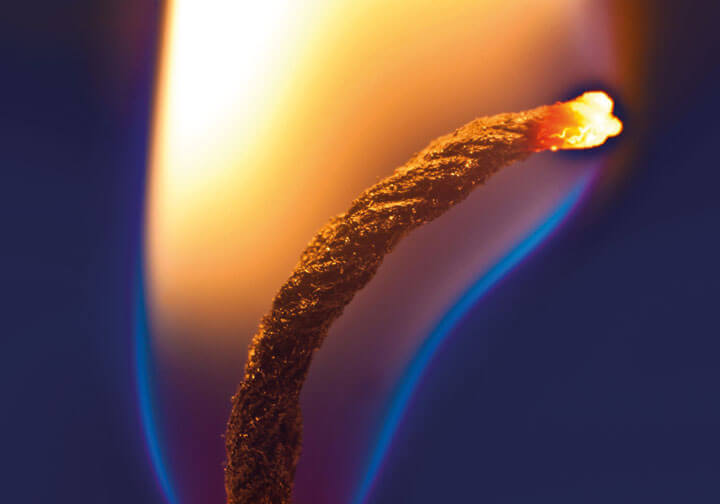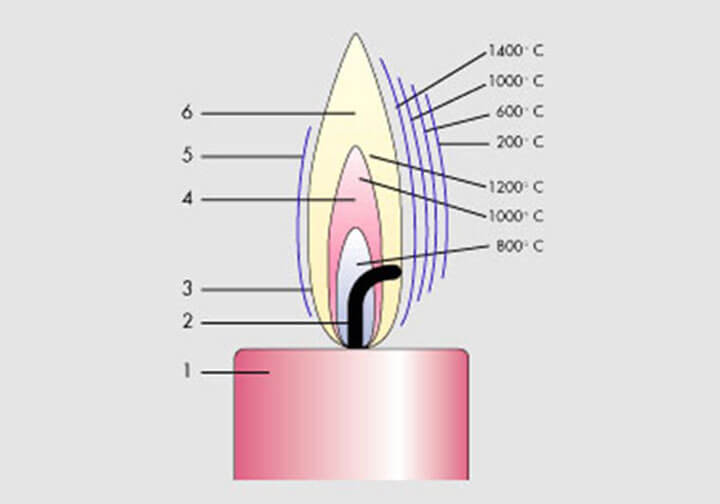
All about wicks
Let us forget our age of high technology for a second and have a purely scientific look at the mechanics of a candle flame. When we light the wick of a candle, the heat of the flame melts the wax.
| Ideal wick position The wick protrudes from the candle in a straight line and curves towards the flame boundary, entering the “glow zone”, where it burns fully at the highest temperature under the influence of oxygen. |  |
| The wick is warped into the shape of a corkscrew This is either due to uneven tension in the yarn during the braiding process or two yarns with different thread counts. Another possible cause are wick strands plying together before insertion into the candle. |  |
| Wick too thick The flame is too large for the diameter of the candle and generates soot. |  |
| Wick too upright Large, residual carbon particles are probably the most widespread and annoying issue affecting the burning performance of candle wicks. The wick does not bend, and its tip fails to reach the outside of the flame, where the temperature is highest and the carbon is burnt completely. Reasons:
|  |
| Wick too thin The flame melts more wax than the wick can burn. The wax pool fills with liquid wax and ultimately overflows or leaks. |  |
| Wick falls over The wick has been inserted into the candle too loosely. This happens most frequently with pressed candles if the wick guide was not properly adjusted. It can also happen with cast candles if the wicks have too much space. |  |
| Wick too short The wick is damaged due to impurities in the candle material. The flame shrinks, the wax pool fills up with liquid wax, and the candle leaks. In extreme circumstances, the candle might be extinguished. This is due to inorganic contaminants in the wax: hard wax, artificial wax, colourants (especially pigments) and scented oil. |  |
| Wick smokes This type of soot is generated as a result of draught. Candles should be burned in a draught-free area. |  |
| Wick bends too far This may be caused by soft paraffin (strong penetration) or insufficient wick preparation. A specially treated wick can stand better in soft paraffin than a regularly treated wick. This frequently happens with pressed candles. Normally treated wicks bend too far if used in pressed candles. We therefore recommend using a specially treated, braided wick for pressed candles. |  |
| Wick generates residual ash This ash is generated by contaminations in the wax. The unburnt materials collect at the end of the wick in the form of thin threads or sometimes even a double wick. A special wick treatment can burn a certain amount of contaminants completely. |  |

Let us forget our age of high technology for a second and have a purely scientific look at the mechanics of a candle flame. When we light the wick of a candle, the heat of the flame melts the wax.

Ideal wick position: The wick protrudes from the candle in a straight line and bends towards the flame boundary, entering the “glow zone”, where it burns fully at the highest temperature under the influence of oxygen.

The flame of a candle is separated into different glowing and temperature areas, which are easily visible to the naked eye: (1) Candle (2) Wick (3) Blue zone: Usually outside of the luminous zone Hottest zone due to oxygen contact
Westdeutsche Dochtfabrik GmbH & Co. KG
Ravensstr. 46, 41334 Nettetal
Mailbox 25 46, 41312 Nettetal